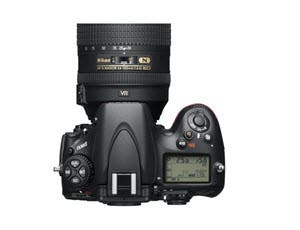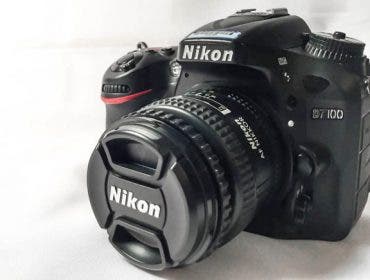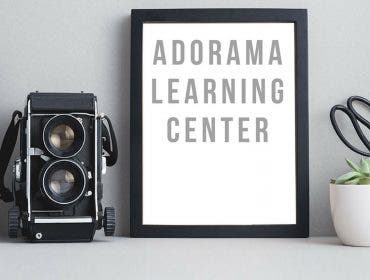Adorama is now accepting pre-orders for the Nikon D800 and D800E.

Read our news coverage: Nikon Announces D800, 36.3MP Multimedia HDSLR Powerhouse
Type: Single-lens reflex digital camera
Lens mount: Nikon F mount (with AF coupling and AF contacts)
Effective pixels: 36.3 million
Image sensor
Image sensor: 35.9 × 24.0 mm CMOS sensor (Nikon FX format)
Total pixels: 36.8 million
Dust-reduction system: Image sensor cleaning, Image Dust Off reference data (requires optional Capture NX 2 software)
Storage
Image size (pixels):
• FX format (36×24): 7,360 × 4,912 (L), 5,520 × 3,680 (M), 3,680 × 2,456 (S) • 1.2× (30×20): 6,144 × 4,080 (L), 4,608 × 3,056 (M), 3,072 × 2,040 (S) • DX format (24×16): 4,800 × 3,200 (L), 3,600 × 2,400 (M), 2,400 × 1,600 (S) • 5:4 (30×24): 6,144 × 4,912 (L), 4,608 × 3,680 (M), 3,072 × 2,456 (S)
• FX-format photographs taken in movie live view*: 6,720 × 3,776 (L), 5,040 × 2,832 (M), 3,360 × 1,888 (S)
• DX-format photographs taken in movie live view*: 4,800 × 2,704 (L), 3,600 × 2,024 (M), 2,400 × 1,352 (S)
*Photographs taken in movie live view have an aspect ratio of 16:9; A DX-based format is used for photographs taken using the DX (24×16) image area; an FX-based format is used for all other photographs
File format: • NEF (RAW): 12 or 14 bit, lossless compressed, compressed or uncompressed • TIFF (RGB) • JPEG: JPEG-Baseline compliant with fine (approx. 1:4), normal (approx. 1:8) or basic (approx. 1:16) compression (Size priority); Optimal quality compression available • NEF (RAW)+JPEG: Single photograph recorded in both NEF (RAW) and JPEG formats
PictureControlSystem: CanbeselectedfromStandard,Neutral,Vivid,Monochrome,Portrait,Landscape; selected Picture Control can be modified; storage for custom Picture Controls
Media: SD (Secure Digital) and UHS-I compliant SDHC and SDXC memory cards; Type I CompactFlash memory cards (UDMA compliant)
Dual card slots: Either card can be used for primary or backup storage or for separate storage of NEF (RAW) and JPEG images; pictures can be copied between cards
File system: DCF (Design Rule for Camera File System) 2.0, DPOF (Digital Print Order Format), Exif (Exchangeable Image File Format for Digital Still Cameras) 2.3, PictBridge
Viewfinder
Viewfinder: Eye-level pentaprism single-lens reflex viewfinder
Frame coverage: • FX (36×24): Approx. 100% horizontal and 100% vertical • 1.2× (30×20): Approx. 97% horizontal and 97% vertical • DX (24×16): Approx. 97% horizontal and 97% vertical • 5:4 (30×24): Approx. 97% horizontal and 100% vertical
Magnification: Approx. 0.7× (50 mm f/1.4 lens at infinity, -1.0 m-1)
Eyepoint: 17 mm (-1.0 m-1; from center surface of viewfinder eyepiece lens)
Diopter adjustment: -3to+1m-1
Focusing screen: Type B BriteView Clear Matte Mark VIII screen with AF area brackets and framing grid
Reflex mirror: Quick return
Depth-of-field preview: When depth-of-field preview button is pressed, lens aperture is stopped down to value selected by user (A and M modes) or by camera (P and S modes)
Lens aperture: Instant return, electronically controlled
Lens
Compatible lenses: Compatible with AF NIKKOR lenses, including type G and D lenses (some restrictions apply to PC-NIKKOR lenses), DX lenses [using DX (24×16) image area], AI-P NIKKOR lenses, and non-CPU AI lenses (exposure modes A and M only); IX- NIKKOR lenses, lenses for the F3AF, and non-AI lenses cannot be used The electronic rangefinder can be used with lenses that have a maximum aperture of f/5.6 or faster, employing eleven focus points with lenses that have a maximum aperture of f/8 or faster
Shutter
Type: Electronically-controlled vertical-travel focal-plane shutter
Speed: 1/8,000 to 30 s in steps of 1/3, 1/2 or 1 EV, bulb, X250
Flash sync speed: X=1/250 s; synchronizes with shutter at 1/320 s or slower (flash range drops at speeds between 1/250 and 1/320 s)
Release
Release modes: S (single frame), CL (continuous low speed), CH (continuous high speed), Q (quiet shutter-release), (self-timer), MUP (mirror up)
Frame advance rate:
• With EN-EL15 batteries
(FX/5:4) CL: approx. 1 to 4 fps, CH: approx. 4 fps, (DX/1.2×) CL: approx. 1 to 5 fps, CH: approx. 5 fps
• Other power sources (FX/5:4) CL: approx. 1 to 4 fps, CH: approx. 4 fps, (1.2×) CL: approx. 1 to 5 fps, CH: approx. 5 fps, (DX) CL: approx. 1 to 5 fps, CH: approx. 6 fps
Self-timer: 2s,5s,10s,20s;1to9exposuresatintervalsof0.5,1,2or3s
Exposure
Metering: TTL exposure metering using 91K-pixel RGB sensor
Metering method: • Matrix: 3D color matrix metering III (type G and D lenses); color matrix metering III (other CPU lenses); color matrix metering available with non-CPU lenses if user provides lens data • Center-weighted: Weight of 75% given to 12-mm circle in center of frame; diameter of circle can be changed to 8, 15 or 20 mm, or weighting can be based on average of entire frame (non-CPU lenses use 12-mm circle or average of entire frame) • Spot: Meters 4-mm circle (about 1.5% of frame) centered on selected focus point (on center focus point when non-CPU lens is used)
Range (ISO 100, f/1.4 lens, 68°F/20°C): • Matrix or center-weighted metering: 0 to 20 EV • Spot metering: 2 to 20 EV
Exposure meter coupling: Combined CPU and AI
Exposure modes: Programmed auto with flexible program (P); shutter-priority auto (S); aperture- priority auto (A); manual (M)
Exposure compensation: -5 to +5 EV in increments of 1/3, 1/2 or 1 EV
Exposure bracketing: 2 to 9frames in steps of 1/3,1/2,2/3 or 1EV
Exposure lock: Luminosity locked at detected value with AE-L/AF-L button
ISO sensitivity (Recommended Exposure Index): ISO 100 to 6400 in steps of 1/3, 1/2 or 1 EV; can also be set to approx. 0.3, 0.5, 0.7 or 1 EV (ISO 50 equivalent) below ISO 100 or to approx. 0.3, 0.5, 0.7, 1 or 2 EV (ISO 25600 equivalent) above ISO 6400; auto ISO sensitivity control available
Active D-Lighting: Can be selected from auto, extra high, high, normal, low or off
ADL bracketing: 2 frames using selected value for one frame or 3 to 5 frames using preset values for all frames
Focus
Autofocus: Nikon Advanced Multi-CAM 3500FX autofocus sensor module with TTL phase detection, fine-tuning, 51 focus points (including 15 cross-type sensors; f/8 supported by 11 central sensors), and AF-assist illuminator (range approx. 1 ft 8 in. to 9 ft 10 in./0.5 to 3 m)
Detection range: -2 to +19 EV (ISO 100, 68°F/20°C)
Lens servo: • Autofocus (AF): Single-servo AF (AF-S); continuous-servo AF (AF-C); predictive focus tracking automatically activated according to subject status • Manual focus (M): Electronic rangefinder can be used
Focus point: Can be selected from 51 or 11 focus points
AF-area modes: Single-point AF, 9-, 21- or 51-point dynamic-area AF, 3D-tracking, auto-area AF
Focus lock: Focus can be locked by pressing shutter-release button halfway (single-servo AF) or by pressing AE-L/AF-L button
Flash
Built-in flash: Manual pop-up with button release and a guide number of approx. 39/12, 39/12 with manual flash (ft/m, ISO 100, 68°F/20°C)
Flash control: TTL: i-TTL flash control using 91K-pixel RGB sensor is available with built-in flash and SB-910, SB-900, SB-800, SB-700, SB-600 or SB-400; i-TTL balanced fill-flash for digital SLR is used with matrix and center-weighted metering, standard i-TTL flash for digital SLR with spot metering
Flash modes: Front-curtain sync, slow sync, rear-curtain sync, red-eye reduction, red-eye reduction with slow sync, slow rear-curtain sync; auto FP high-speed sync supported
Flash compensation: -3 to +1 EV in increments of 1/3, 1/2 or 1 EV
Flash bracketing: 2 to 9 frames in steps of 1/3,1/2,2/3or1EV
Flash-ready indicator: Lights when built-in flash or optional flash unit is fully charged; blinks after flash is fired at full output
Accessory shoe: ISO 518 hot-shoe with sync and data contacts and safety lock
Nikon Creative Lighting System (CLS): Advanced Wireless Lighting supported with built-in flash, SB-910, SB-900, SB-800 or SB-700 as a master flash and SB-600 or SB-R200 as remotes, or SU-800 as commander; built-in flash can serve as master flash in commander mode; auto FP high-speed sync and modeling illumination supported with all CLS-compatible flash units except SB-400; Flash Color Information Communication and FV lock supported with all CLS-compatible flash units
Sync terminal: ISO 519 sync terminal with locking thread
White balance
White balance: Auto (2 types), incandescent, fluorescent (7 types), direct sunlight, flash, cloudy, shade, preset manual (up to 4 values can be stored) and color temperature setting (2,500 K to 10,000 K); fine-tuning available for all options
White balance bracketing: 2 to 9 frames in steps of 1,2 or 3
Live view
Modes: Live view photography (still images), movie live view (movies)
Lens servo: • Autofocus (AF): Single-servo AF (AF-S); full-time servo AF (AF-F) • Manual focus (M)
AF-area modes: Face-priority AF, wide-area AF, normal-area AF, subject-tracking AF
Autofocus: Contrast-detect AF anywhere in frame (camera selects focus point automatically when face-priority AF or subject-tracking AF is selected)
Movie
Metering: TTL exposure metering using main image sensor
Frame size (pixels) and frame rate: • 1,920 × 1,080; 30p, 25p, 24p • 1,280 × 720; 60p, 50p, 30p, 25p; actual frame rates for 60p, 50p, 30p, 25p, and 24p are 59.94, 50, 29.97, 25, and 23.976 fps respectively; options support both high and normal image quality
File format: MOV
Video compression: H.264/MPEG-4 Advanced Video Coding
Audio recording format: Linear PCM
Audio recording device: Built-in monaural or external stereo microphone; sensitivity adjustable
Movie options: Index marking, time-lapse photography
Monitor
Monitor: 3.2-in. (8-cm), approx. 921k-dot (VGA) TFT LCD with 170° viewing angle, approx. 100% frame coverage, and automatic monitor brightness control using ambient brightness sensor
Playback
Playback: Full-frame and thumbnail (4, 9 or 72 images) playback with playback zoom, movie playback, photo and/or movie slide shows, highlights, histogram display, auto image rotation, and image comment (up to 36 characters)
Interface
USB: SuperSpeed USB (USB 3.0 Micro-B connector)
HDMI output: Type C mini-pin HDMI connector; can be used simultaneously with camera monitor
Audio input: Stereo mini-pin jack (3.5-mm diameter)
Audio output: Stereo mini-pin jack (3.5-mm diameter)
10-pin remote terminal: Can be used to connect optional remote control, GP-1 GPS Unit or GPS device compliant with NMEA0183 version 2.01 or 3.01 (requires optional MC-35 GPS Adapter Cord and cable with D-sub 9-pin connector)
Supported languages: Arabic, Chinese (Simplified and Traditional), Czech, Danish, Dutch, English, Finnish, French, German, Indonesian, Italian, Japanese, Korean, Norwegian, Polish, Portuguese, Romanian, Russian, Spanish, Swedish, Thai, Turkish, Ukrainian
Power source
Battery: One EN-EL15 Rechargeable Li-ion Battery
Battery pack: Optional MB-D12 Multi-Power Battery Pack with one EN-EL15/EN-EL18* Rechargeable Li-ion Battery or eight R6/AA-size alkaline, Ni-MH or lithium batteries *Requires BL-5 Battery Chamber Cover (available separately)
AC adapter: EH-5b AC Adapter; requires EP-5B Power Connector (available separately)
Tripod socket: 1/4 in. (ISO 1222)
Dimensions/Weight
Dimensions (W × H × D): Approx. 5.7 × 4.8 × 3.2 in./146 × 123 × 81.5 mm
Weight: Approx. 2 lb 3.3 oz/1,000 g with battery and SD memory card but without body cap; approx. 1 lb 15.7 oz/900 g (camera body only)
Operating environment: Temperature: 32 to 104°F/0 to 40°C; humidity: less than 85% (no condensation)
Supplied accessories (may differ by country or area): EN-EL15 Rechargeable Li-ion Battery, MH-25 Battery Charger, DK-17 Eyepiece, UC-E14 USB Cable, USB Cable Clip, Camera Strap, BM-12 LCD Monitor Cover, BF-1B Body Cap, BS-1 Accessory Shoe Cover, ViewNX 2 CD-ROM



